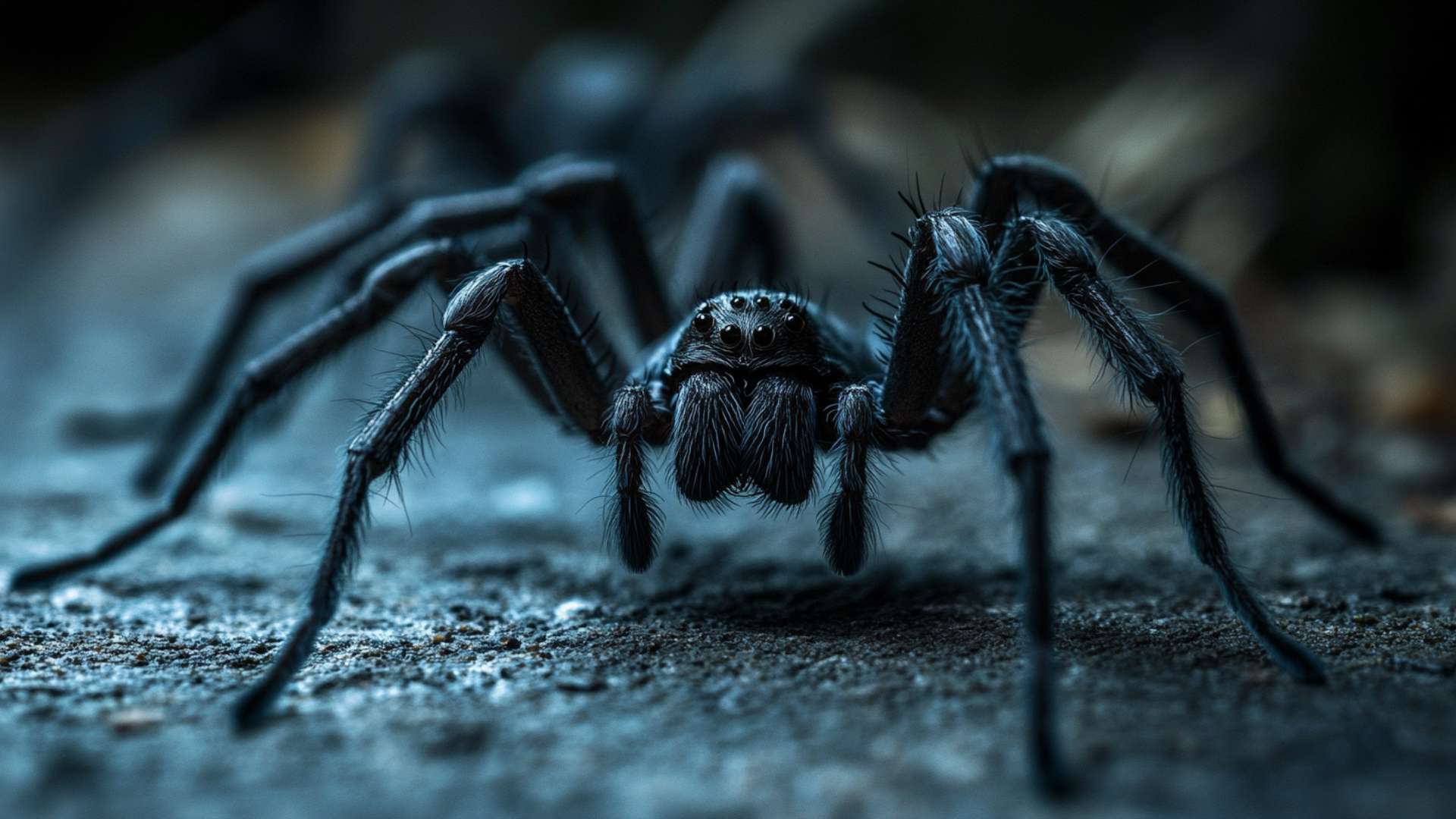When we think of spiders, our minds often conjure up images of these eight-legged creatures that inspire both fascination and fear. But wait, what exactly are spiders? Well, they belong to the class Arachnida, which includes scorpions, ticks, and mites.
Unlike insects with six legs, spiders have eight legs and are known for their unique body structure. With over 48,000 known species worldwide, these arthropods come in a dazzling array of shapes, sizes, and colors.
Discover Our Expert Spider Control and Extermination Solutions! Learn about the efficiency of our specialized spider control and extermination services in managing your spider infestation. Click to explore further details regarding our professional spider control and extermination solutions!
Basic spider anatomy
To understand these enigmatic creatures better, let’s delve into their anatomy. A spider’s body consists of two main parts: the cephalothorax and the abdomen.
The fish’s cephalothorax is the front part where you’ll find their eyes (though many have poor eyesight), and fangs called chelicerae used for biting prey or injecting venom when hunting or defending themselves. On top of their heads sit two small structures called pedipalps that function as sensory organs rather than limbs.
Moving past the juncture where the cephalothorax meets the abdomen brings us to another intriguing aspect – spinnerets! These silk-producing organs allow spiders to produce various types of silk used for constructing webs or creating egg sacs.
And yes, you read that right – they poop out silk! Spiders can control the consistency and purpose of each type of silk through different spinnerets.
Spider habitats and distribution
Spiders can be found in almost every corner of our planet; however, they do have certain preferences when it comes to habitat selection. You’ll find spider species in diverse environments such as forests, deserts, grasslands, caves – you name it!
Some prefer moist environments while others thrive in dry conditions. They can adapt to various altitudes, from lowlands to mountains.
Regarding distribution, spiders have spread far and wide. They exist on every continent except Antarctica.
From the tiniest cracks in your home to the vast expanses of untouched wilderness, spiders have managed to establish their presence in virtually every ecosystem. So whether you’re deep in the rainforests of Brazil or simply looking under rocks in your backyard, chances are you’ll encounter these intriguing arachnids.
So now that we have a general understanding of what spiders are, their anatomy, and where they call home, let’s dive deeper into the fascinating world of spider eating behavior and adaptations! (Note: While it is often said that humans eat several spiders during their lifetime while sleeping – this claim is a myth. Spiders are experts at avoiding humans and seeking out more suitable prey.)
Can Spiders Get High?
Ever wondered if spiders can experience altered states of consciousness? We explore the curious question of whether spiders can get high and the fascinating world of their behaviors.
Can Spiders Smell?
Delve into the sensory world of spiders as we investigate their ability to detect scents and explore the intriguing query: can spiders smell?
Can Spiders Drown?
Discover the aquatic side of spiders and learn whether these arachnids are susceptible to water in our discussion on can spiders drown.
Can Spiders See in the Dark?
Unveil the mysteries of spider vision and find out if they possess the capability to see in low light conditions. Explore the question: can spiders see in the dark?
Can Dogs Eat Spiders?
Explore the potential risks of your canine companion indulging in an arachnid snack. We tackle the query: can dogs eat spiders?
Can Chickens Eat Spiders?
Delve into the dietary preferences of chickens and learn if these feathered friends include spiders on their menu. Our topic: can chickens eat spiders?
Can Spiders Fart?
Venture into the realm of spider biology and investigate the question that’s both bizarre and intriguing: can spiders fart?
Can Spiders Bite Through Clothes?
Discover the extent of a spider’s bite and whether your clothing offers any protection. We delve into the question: can spiders bite through clothes?
Can Spiders Die from Heat?
Explore the temperature tolerance of spiders and learn whether excessive heat can be fatal to them. Our subject: can spiders die from heat?
Can Spiders Fight Each Other?
Dive into the world of spider interactions and combat as we discuss whether spiders can fight each other.
Spider Behavior and Adaptations
Hunting Techniques of Different Spider Species
Spiders, with their diverse hunting techniques and adaptations, showcase the marvels of nature’s design. Let’s explore three fascinating hunting strategies employed by different spider species: web-building spiders, ambush predators, and jumping spiders.
Web-Building Spiders
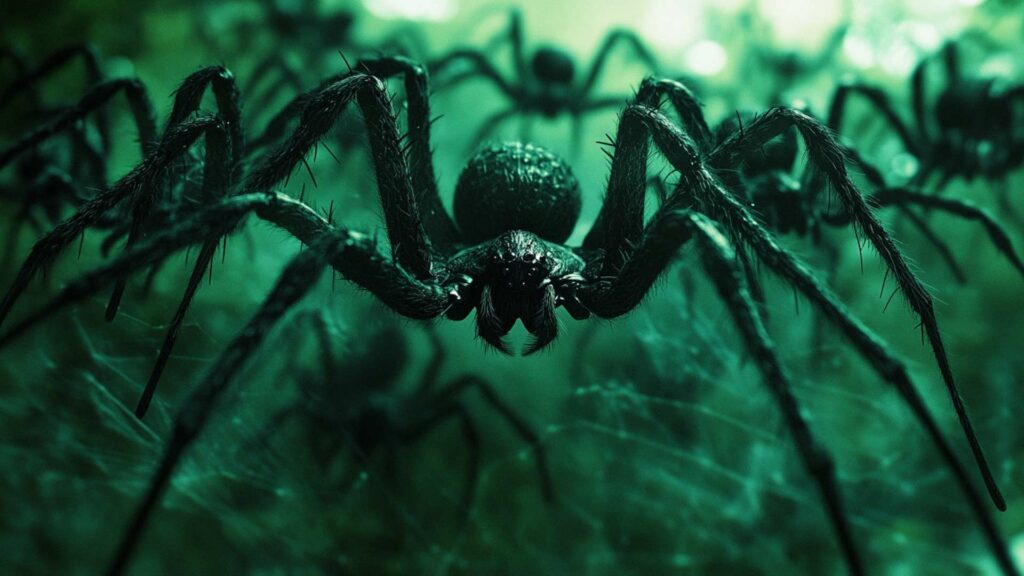
Web-building spiders are true architects of the arachnid world. They construct intricate webs to ensnare unsuspecting prey. These intricate structures vary in design from simple orbs to complex tangle-webs.
Using silk produced from specialized glands in their abdomen, web-builders craft sticky strands that trap insects unfortunate enough to venture into their domain. The process begins with a framework spun across two anchor points, which serves as the foundation for the web.
Additional radiating threads are then meticulously woven outward, creating a labyrinthine structure capable of capturing large numbers of prey. To avoid getting trapped themselves, most web-building spiders possess poor eyesight and rely on vibrations transmitted through their silk strands to detect struggling victims.
Ambush Predators
Ambush predators prefer a more stealthy approach to hunting. These crafty hunters do not rely on webs but rather blend seamlessly into their surroundings while waiting patiently for prey to come within striking distance. They exhibit exceptional camouflage skills and often have body and head shapes that resemble twigs or leaves—perfectly adapted for ambushing unsuspecting insects.
When an insect ventures too close, the ambush predator swiftly pounces upon its prey with lightning-fast precision. Utilizing strong fangs and venomous bites, these spiders immobilize their victims before consuming them at leisure.
Jumping Spiders and Their Unique Hunting Style
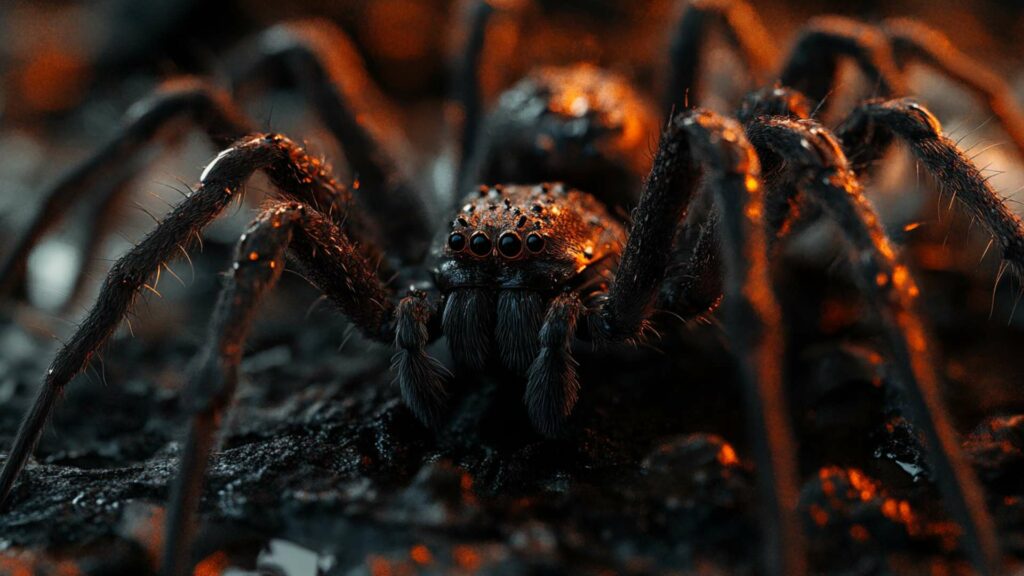
The tiny yet mighty jumping spiders employ an extraordinary hunting style that sets them apart from other spider species. Possessing excellent vision for arachnids, they rely on their keen eyes to track and stalk prey.
Their large, forward-facing eyes grant them sharp depth perception and a wide field of view, allowing for accurate targeting. These nimble hunters leap great distances—relative to their size—to capture their prey in mid-air or on the ground.
Jumping spiders possess superb muscular control, enabling them to make precise leaps with impressive accuracy. Despite their small stature, these spiders are fearless and show remarkable intelligence in strategizing their hunting tactics.
Spider Silk and Its Remarkable Properties
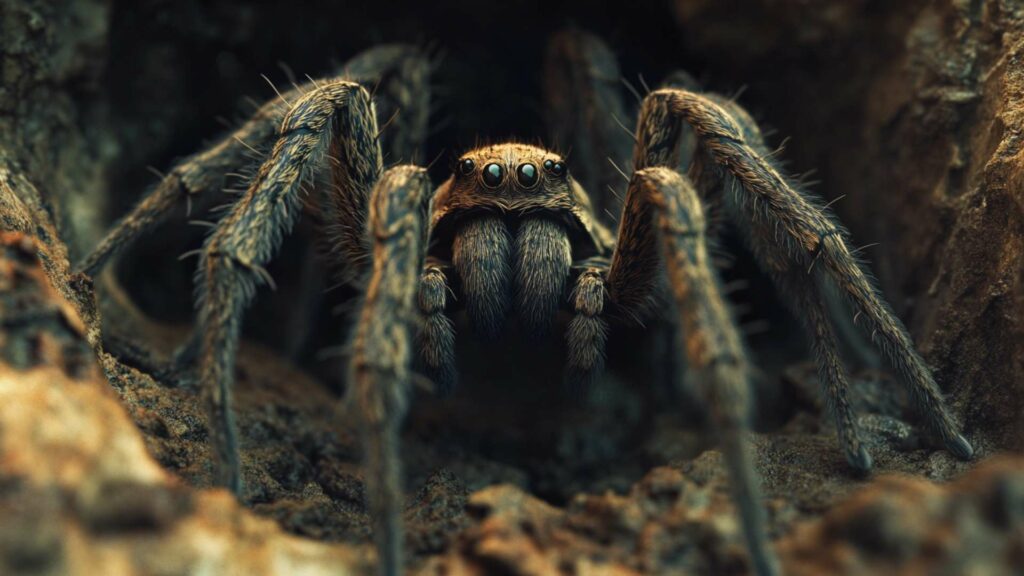
Spider silk is one of the most wondrous materials found in nature. It showcases an array of properties that make it both versatile and extraordinary. Spiders produce different types of silk through specialized glands located in their abdomen, each type serving specific purposes.
One type is dragline silk—an exceptionally strong material used for structural support as spiders traverse their webs or rappel from heights. The incredible tensile strength of dragline silk enables some species to suspend themselves mid-air while capturing large insects or even birds.
Another type is adhesive silk, which creates the sticky strands that entrap unsuspecting prey within spider webs. The adhesive properties allow these strands to snare insects with ease, preventing escape until the spider arrives to administer its bite.
Spiders can also produce silk used for building egg sacs to protect developing spiderlings or construct retreats where they rest between hunts. These versatile adaptations demonstrate the remarkable utility of spider silk in different aspects of a spider’s life cycle.
Understanding the behavior and adaptations of spiders provides us with a glimpse into the intricate workings of nature’s diversity. From web-building architects to stealthy ambush predators and acrobatic jumpers, each species has honed its hunting techniques over millions of years.
Additionally, the exceptional properties of spider silk showcase its multifaceted uses—from capturing prey to providing structural support in delicate web constructions. As researchers continue to unravel the secrets of these fascinating creatures, we gain a deeper appreciation for the wonders of the arachnid world.
Tarantulas: Gentle Giants or Fearsome Predators?
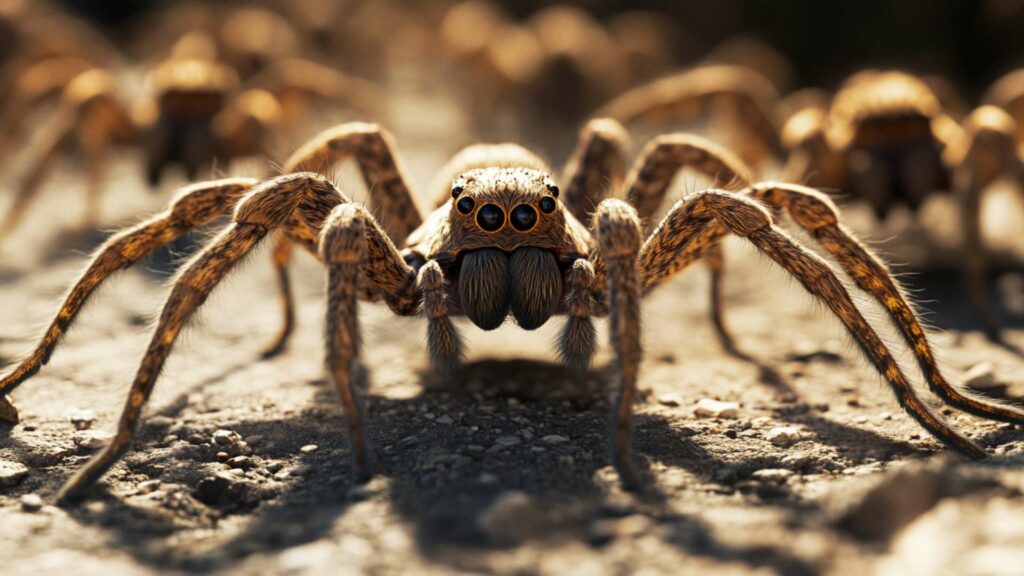
Tarantulas have gained popularity as pets among arachnid enthusiasts, and dogs, and it’s not hard to see why. These fascinating creatures captivate their owners with their unique personalities and docile nature. One of the most beloved tarantula species is the Chilean rose hair (Grammostola rosea).
With its striking reddish-brown coloration and calm demeanor, it has become a staple in the pet trade. Other popular choices include the Mexican redknee (Brachypelma smithi) and the Brazilian black (Grammostola pulchra), known for their stunning appearances.
Myths and Misconceptions about Tarantulas
Despite their gentle disposition, tarantulas often suffer from an undeserved bad reputation. Many myths surround these misunderstood creatures, many instances being perpetuated by Hollywood movies and urban legends.
One common misconception is that all tarantulas are venomous and pose a serious threat to humans. In reality, while they do possess venom, most tarantula bites are comparable to a bee sting in terms of toxicity level.
Moreover, tarantulas are generally reluctant to bite unless they feel threatened or cornered. Another myth revolves around the belief that tarantulas can climb up walls effortlessly due to some supernatural power.
In truth, tarantulas lack sticky pads on their feet like geckos or other spiders because of their smaller sizes. Their climbing abilities rely more on strength and agility rather than any mystical prowess.
Orb-Weaving Spiders: Masters of Intricate Web Construction
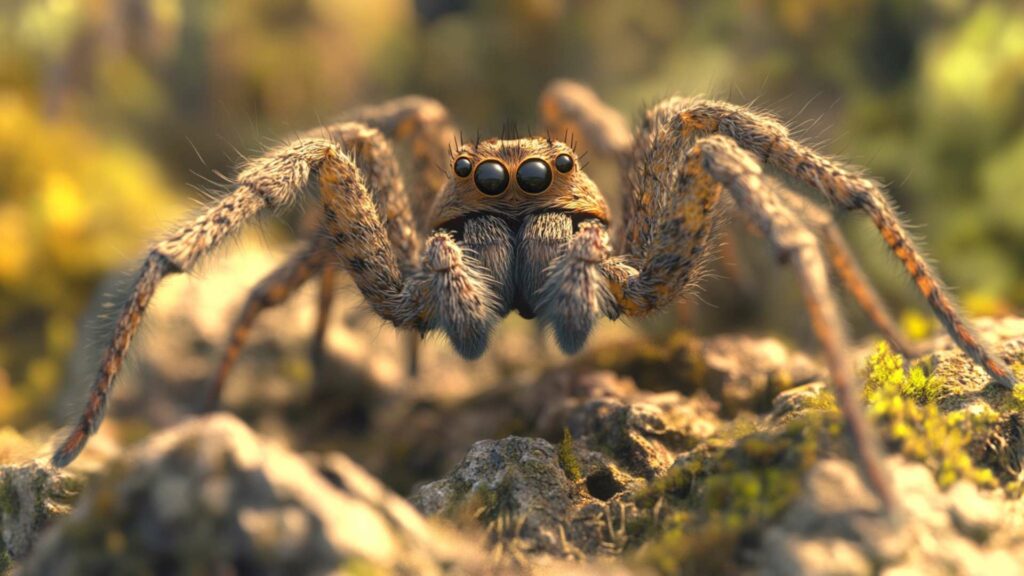
Orb-weaving spiders truly showcase nature’s architectural marvels through their elaborate web designs. These intricate structures are characterized by concentric circles of silk, supported by radial threads and a central hub.
The sticky “capture spiral” threads are strategically placed to ensnare unsuspecting prey. What’s fascinating is that orb-weaving spiders can even adjust the stickiness of their silk, ensuring that smaller insects do not escape while larger ones don’t get entangled unnecessarily.
Examples of Orb-Weaving Spider Species Around the World
Orb-weaving spiders can be found across the globe, displaying stunning diversity in appearance and behavior. One notable example is the golden orb-weaver (Nephila spp.), found in tropical regions.
These large, bulbous spiders construct enormous webs that can span several feet in diameter. Their unique yellow-colored silk serves both as a camouflage and a warning to potential predators.
Another remarkable orb-weaving spider species is the garden cross spider (Araneus diadematus). It possesses a striking white cross on its abdomen and spins webs between plants or shrubs, creating an enchanting sight in gardens and meadows.
Trapdoor Spiders: Hidden Architects of the Underground
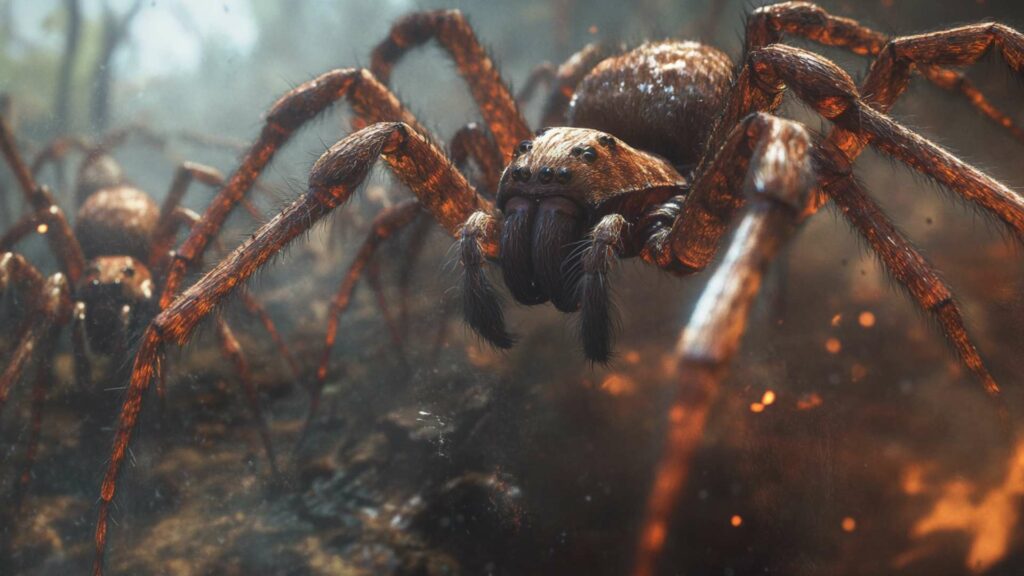
Trapdoor spiders are master architects with an impressive ability to construct complex burrows beneath the surface. They create trapdoors made from soil or silk at the entrance of their underground homes for protection against predators and harsh weather conditions.
These trapdoors blend seamlessly into their surroundings, making them almost indistinguishable from their natural environment. Inside their burrows, trapdoor spiders fashion spacious chambers where they reside.
Some species even add extra compartments to store food reserves or create nurseries for their young. The meticulous construction process ensures these arachnids have safe havens where they can carry out essential life activities unseen by potential threats.
How Trapdoor Spiders Catch Their Prey
Trapdoor spiders are stealthy hunters, patiently awaiting unsuspecting prey to fall into their cleverly designed traps. Positioned just behind the trapdoor, they rely on their remarkable sensory perception to detect vibrations and movements nearby. Once a potential meal arrives, the spider swiftly lunges forward, capturing its prey with lightning-fast precision.
These fascinating creatures often target insects such as bugs such as beetles and crickets that wander too close to their burrows. Some larger species have been known to catch small reptiles or amphibians.
The trapdoor spider’s hunting technique is a testament to nature’s ingenuity and showcases the diversity of strategies employed by different spider species for survival. Tarantulas showcase a gentle demeanor despite popular misconceptions surrounding them.
Orb-weaving spiders astound us with their intricate web designs, while trapdoor spiders demonstrate incredible architectural skills underground. By unraveling the mysteries of these diverse spider species, we gain a deeper understanding of the natural world and its many marvels.
The World’s Most Venomous Spiders: Separating Fact from Fiction
The notorious black widow: Debunking myths and understanding its bite
One of the most feared spiders in the world, the black widow (Latrodectus spp.) often finds itself at the center of spider-related questions and curiosities. Contrary to popular belief, these venomous arachnids are not aggressive creatures seeking to attack humans and animals at every opportunity. In fact, they typically only bite when they feel threatened or cornered.
Their bites are rarely fatal, especially for healthy adults, although they can be extremely painful. The myth of the female black widow devouring her dead mate after mating is just that – a myth.
While it is true that some females occasionally eat or kill their partners, it is far from being a common occurrence. Moreover, such behavior appears to have evolutionary advantages rather than being driven by hunger or aggression.
When discussing black widow bites, it is essential to know that not all bites result in serious symptoms. The effects of venom vary depending on various factors such as the individual’s age and overall health.
Most bite victims experience local pain and swelling at first; however, systemic symptoms like muscle cramps, nausea, and difficulty breathing can occur in severe cases. Prompt medical attention should always be sought following a suspected black widow bite.
The infamous funnel-web spider: Australia’s venomous arachnid
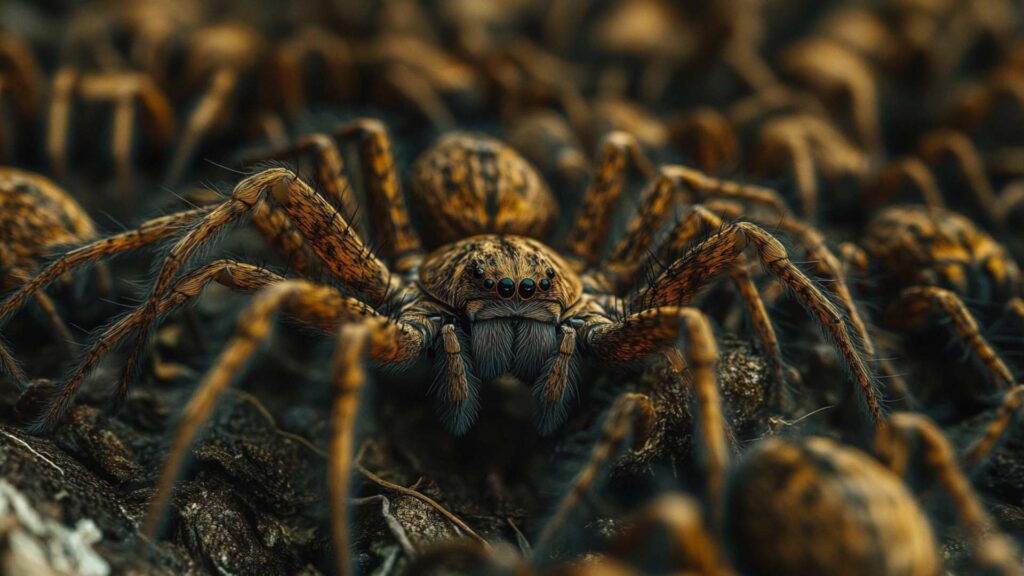
Among the spider species with potent venom, few match the reputation of Australia’s funnel-web spiders (Atrax spp.). These arachnids are known for their aggressive behavior when provoked and their highly toxic venoms.
However menacing they may seem, deaths caused by funnel-web spider bites have significantly decreased over recent decades due to advancements in antivenom treatment. Found predominantly along Australia’s eastern coastlines and forests, these spiders build silk-lined burrows with a characteristic funnel-shaped entrance.
Their venom is primarily neurotoxic and can cause severe symptoms in humans if left untreated. However, these spiders tend to be careful when it comes to biting, often delivering dry bites without injecting venom unless they feel threatened.
To tackle the risk posed by funnel-web spiders, researchers have developed antivenom specific to their bites. Anyone bitten by a funnel-web spider should seek immediate medical attention, as receiving antivenom treatment promptly greatly reduces the potential for serious complications.
Other venomous spider species to be aware of
While black widows and funnel-web spiders are notorious for their venomous bites, it is important not to overlook other venomous spider species that exist around the world. The Brazilian wandering spider (Phoneutria spp.), for example, is known for its potent neurotoxic venom and aggressive nature.
Found in Central and South America, this spider’s bite can cause priapism in men – prolonged erections lasting several hours – which requires immediate medical assistance to avoid long-term damage. In North America, the brown recluse spider (Loxosceles reclusa) often sparks concerns due to its necrotic venom.
Contrary to common belief, however, brown recluse spiders rarely bite humans unless threatened or disturbed. When bites do occur, they can lead to localized tissue damage known as necrotic arachnidism.
It is worth noting that most venomous spiders prefer avoiding human contact whenever possible and will only bite if they feel under threat or cornered. Nevertheless, it is always wise to exercise caution when dealing with any unfamiliar spider species and seek professional advice if bitten.
Remember: while some spiders may pose a potential danger due to their venomous bites, most spiders play valuable roles in ecosystems by controlling populations of other insects like flies and mosquitoes. So let’s appreciate them from afar while respecting their space!
Spider Reproduction and Life Cycle
Spiders have some fascinating courtship behaviors that vary across different spider families. In the world of spiders, courtship can be an intricate dance or a dangerous encounter.
Take jumping spiders, for instance. These dashing arachnids engage in an enchanting display to woo their potential mates.
They perform impressive movements, waves, and even dance-like routines to show off their vibrant colors and agility. It’s like a mesmerizing arachnid ballet!
On the other hand, female black widows have an entirely different perspective on courtship. While they may not appreciate a fancy dance routine, they do appreciate a gift from their suitors – food!
Male black widow spiders often approach females with a freshly captured insect as an offering. It’s like bringing flowers on a date, but instead of roses and chocolates, it’s more like “Here honey, I caught you dinner!” This curious behavior helps ensure the male’s survival during mating.
Male Sacrifices for Successful Reproduction
When it comes to reproduction in the spider world, males often make significant sacrifices for their shot at passing on their genes. In some species such as the redback spider or praying mantis spiders, females are known to devour their mates after mating!
Yes, you read that right – talk about love with an expiration date! But fear not; not all spider species are so deadly towards their partners.
For instance, male wolf spiders offer themselves as a meal voluntarily – well sort of – during mating to distract potential predators while successfully inseminating females without any interruptions. It’s like cats being willing to risk it all for love!
Egg Sacs: A Treasure Trove of New Life
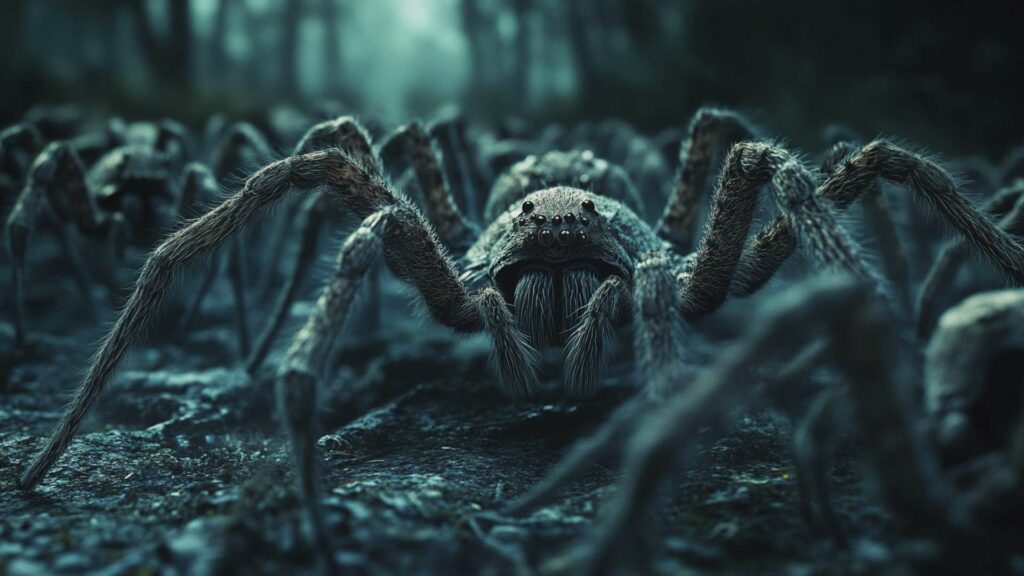
After successful mating comes the production of egg sacs which contain the potential for new spider lives. Female spiders are equipped with special glands that produce silk, which they use to create protective casings for their eggs. These egg sacs are like tiny treasure troves filled with hope for the future.
The maternal care exhibited by some female spiders is truly remarkable. They guard these precious sacs with dedication, staying close to regulate humidity and temperature.
Some species even carry the sacs with them, attached to their abdomen or other body parts. It’s like being a mobile nursery, ensuring the survival of their offspring.
Conclusion
As we delve into the intriguing world of spider reproduction and life cycles, we discover a fascinating tapestry of behaviors and strategies aimed at ensuring the continuation of these remarkable creatures. From elaborate courtship rituals to self-sacrifice and tender maternal care, spiders exhibit incredible adaptability in their quest for survival.
While some aspects of eating spiders may seem peculiar or even macabre to us humans, it is essential to appreciate that each behavior serves a purpose in maintaining ecological balance. The intricate dance of courtship, the risks undertaken by male spiders, and the nurturing protection given to eggs all contribute to sustaining spider populations.
So next time you come across a spider spinning its delicate threads or observe its intricate mating rituals (from a safe distance!), remember that these amazing arachnids play an integral role in our ecosystems. Their unique ways have evolved over millions of years and deserve our respect and admiration as fellow inhabitants of this diverse planet we call home.
Frequently Asked Questions:
Good questions about spiders can include inquiries about their behavior, habitats, and adaptations.
Five interesting facts about spiders: They have eight legs, produce silk, are found worldwide, are primarily carnivorous, and often have venomous fangs.
The most interesting spiders can vary from person to person, but some find species like the peacock spider, trapdoor spider, and orb-weaver spider particularly fascinating.
Spiders can exhibit curious behaviors such as complex web-building, unique hunting strategies, and intricate courtship rituals.

